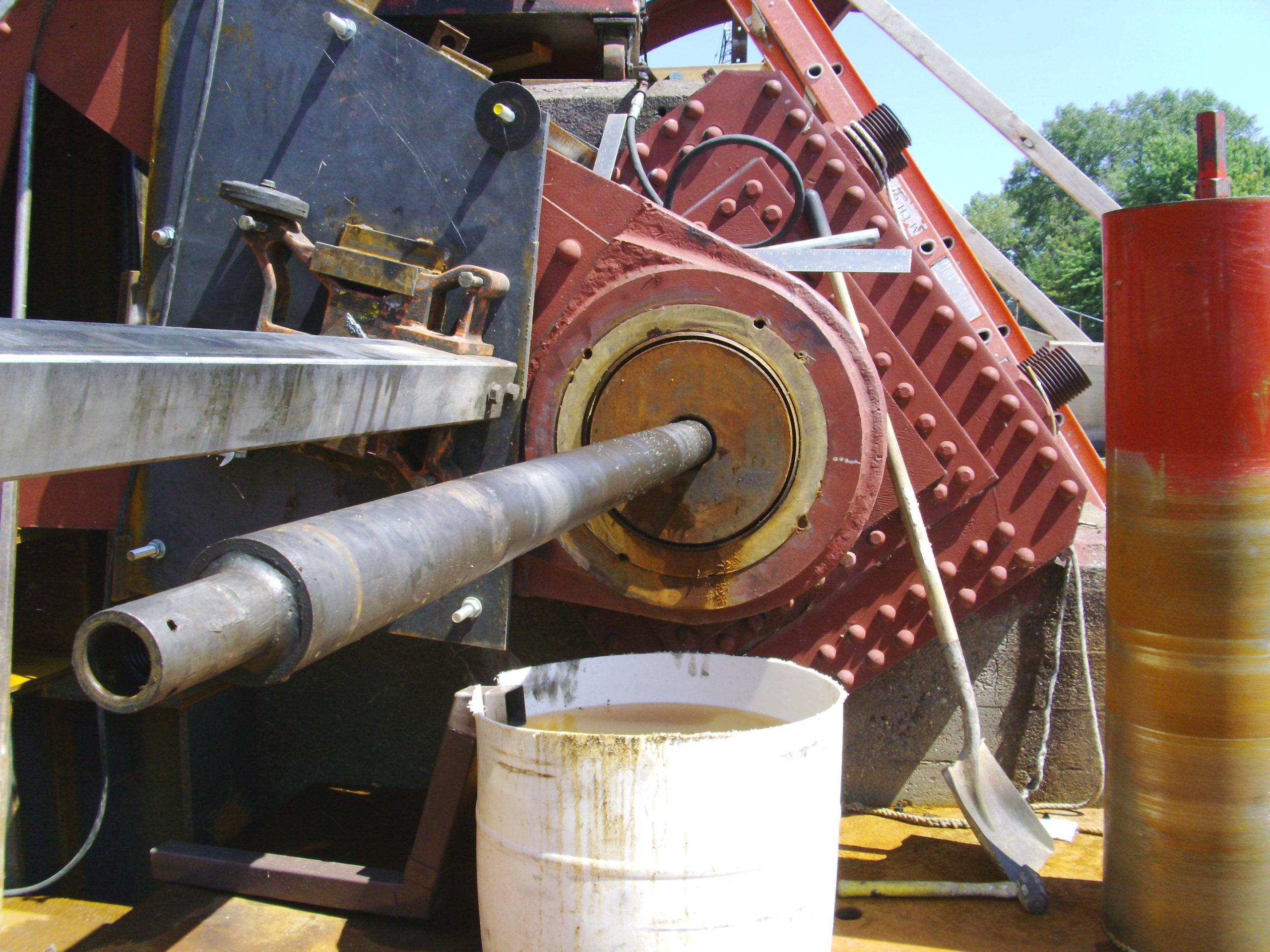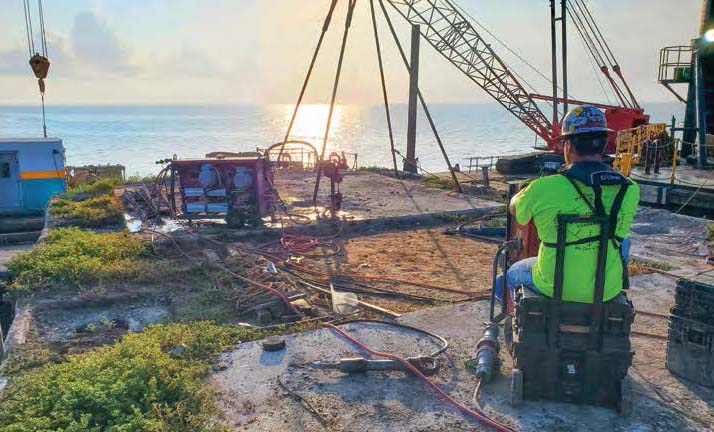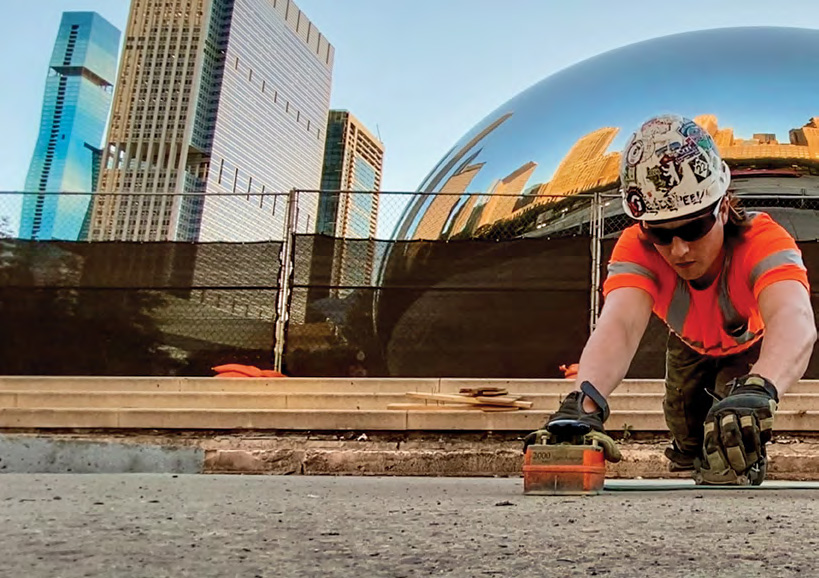
Friday Night Lights: Renovating a Texas High School Stadium
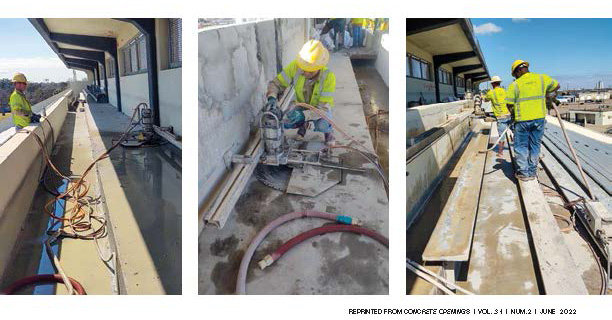
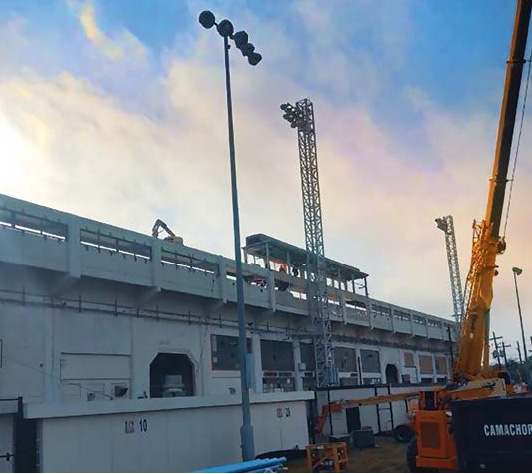
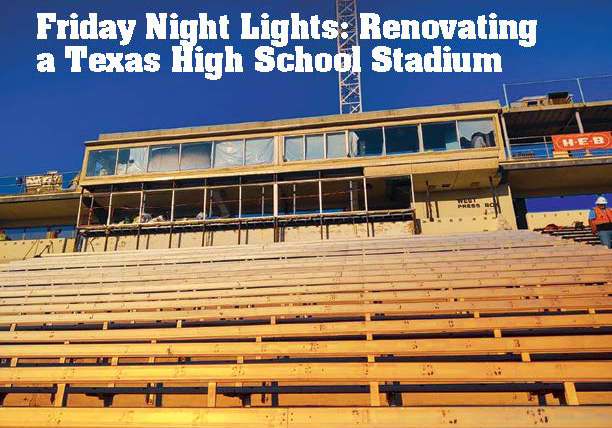
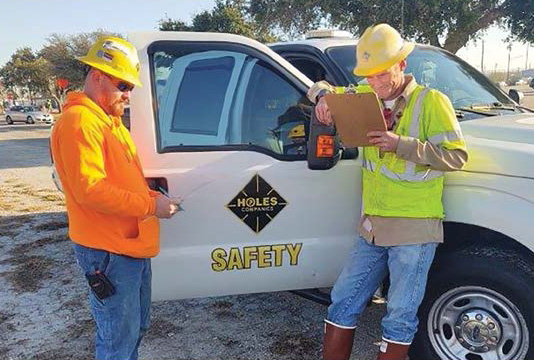
Friday night football games are a part of American high school culture, and especially notable in Southern states like Texas, where high school football could be seen as a type of religion. There’s a communal sense of pride when your school beats the rival team, and it can boost student morale and get friends and families together for a fun night. These high school football games, played in stadiums like Buccaneer Stadium in Corpus Christi, Texas, have the potential to draw enormous crowds on Friday nights. Buccaneer Stadium has notably drawn crowds up to 23,000 in attendance since its development in 1939. That being said, the stadium was antiquated, and as well-loved as this stadium was as it stood, it was time to prepare it for some major upgrades.
CSDA contractor Holes South Texas, LLC was contracted by Camacho Demolition to work on the Weaver & Jacobs Constructors, Inc.’s Buccaneers Stadium Press Box project. The original 81-year-old press box needed to be demolished to make way for a new two-story press box that will feature amenities such as two large VIP rooms, updated technology and an elevator for accessibility. At the top of the stadium on the visitors’ side, Holes was tasked with the removal of the complete press box, including 100’ of the covered seating area and 80’ of knee wall.
The Holes team began each day with a morning safety meeting. The meeting included a daily job scope discussion to figure out which pieces needed to be cut first, what size pieces could be lifted by the crane and how much of the job could be pre-cut if the weather became an issue. Spring in Corpus Christi can bring unpredictable weather, and this spring was no exception, with storms and wind gusts in excess of 25-30mph. These winds would certainly complicate and delay the crane work. Operators began the project by rigging their equipment to the crane with taglines to stabilize the attached equipment and flying the equipment to the press box, approximately 60’ off the ground. Once established and the necessary cuts and core holes were measured and laid out, operators began the project by core drilling 8” rigging holes with Cardi 6 speed core drills.
Two Husqvarna wire saws were set up on the top of the stadium to begin cutting the covered seating area. The wire saws were utilized to cut the roof into four 20’ sections. As the sections were cut, the operators reconfigured the wire saws to cut the 32” beams that connected the canopy roof to the stadium itself. The wire saws were installed horizontally to ensure that once removed, the beams would be cut flush with the bottom deck to allow Weaver and Jacobs to tie back into the stadium. Next, the wire saws were again reconfigured to remove each section of the back wall of the press box. Five 18’ cuts were made to remove the back wall of the stadium.
Pieces were lifted off by the crane operated by Camacho Demolition. In order to successfully remove the pieces, a lift plan was created for each section of the stadium. The lift plan consisted of calculating the weight of each lift, identifying how each piece would be rigged onto the crane and supported during the removal and clearing the area to ensure no one nor any equipment was within the lift area. Complicating the removal was a light tower obstruction at the back of the stadium. Weaver & Jacobs had stated that the light tower would remain in place and could not be damaged, hit or bumped. Therefore, carefully rigging the pieces to mitigate swing during removal was complex and required special attention.
The plan started with how to position the crane to lift an L-shaped beam that was located underneath the stadium lights right next to the lattice mast tower. Once positioned in place and the concrete cut, Holes operators used chain falls, chokers, shackles and steel wedges to walk the piece out so it could be lifted evenly and wouldn’t swing and damage the tower. Each piece was strapped and supported to promote balance and mitigate any potential swinging during removal. The next portion of the project consisted of wall sawing 80’ of knee wall free from the stadium. Holes utilized two operators and both the Hilti and Pentruder wall saws to cut the wall in one day. The pieces, once prepared for removal, were flown off by Camacho the following day.
It was highly important to keep the concrete from breaking and falling to the ground, as it would cause additional damage to the remaining part of the stadium that was being preserved. Falling concrete could also cause injury to individuals or damage equipment below; therefore, having and following a plan was vital to the success of the project. Each cut was made precisely to leave a finished appearance ready for the new press box installation.
There was potential for being crushed or struck by while the crane was rigged to the pieces as they were cut free. Operators measured equidistance on each piece, calculated the weight and used the full length of the remote cord and hydraulic hoses while attaching pieces to the crane. This ensured operators were a safe distance away from the large pieces of concrete being flown away by the crane. The potential for falls from heights once the wall was removed was another concern, and to mitigate this risk, each anchor point was set so that operators were tied off 100% of the time. Holes operators also worked from the edge of the stadium to the middle so that they could avoid back tracking and unnecessary leading edges. Barricades were also put into place as the walls were removed.
Electrocution and shock were additional hazards on the job; therefore, lockout/tagout (LOTO) was performed on the press box before demo, and Holes operators routed all 480 power cords clear of crush zones, performing inspection before and during each shift. Holes believes they were chosen due to their commitment to safety on the jobsite. Kellie Kimball, Vice President of Holes said, “Holes was hired due to our safety-first mentality. Our team comes prepared to work safely on any project no matter how big or small the project is.”
True to Holes’ reputation, the job was completed on time and on budget. The General Contractor, Weaver & Jacobs Constructors, Inc., specifically requested through the demolition contractor, Camacho Demolition, that Holes South Texas LLC be hired for this project due to their reputation and safety performance on previous jobs. The new press box is expected to be completed in August 2022 – just in time for the first high school football game of the season! Congratulations to the Corpus Christi Buccaneers and to Holes South Texas, LLC on a job well done!
COMPANY PROFILE
The Holes Companies are service companies specializing in concrete slab sawing, core drilling, wall sawing, wire sawing, anchor bolt installation, concrete breaking, lifting, demolition, GPR scanning, load and haul and Concrete Pour Back. The Holes Companies primarily work for commercial and industrial contractors, state highway departments and municipalities. Holes Incorporated, Holes Golden Triangle, LLC, Holes South Texas, LLC and Holes Technology, LP have built a solid track record through 50 years of experience, reliability and reputation. They have 50 employees and 28 operators and have been CSDA members since 1976.
RESOURCES
General Contractor
Weaver & Jacobs Constructors, Inc.
CSDA Contractor Holes Incorporated
Contact for Story: Kellie Kimball Email: Kellie@HolesInc.com
Tel: 281-469-7070
Methods Used
Wire Sawing, Wall Sawing, Core Drilling











